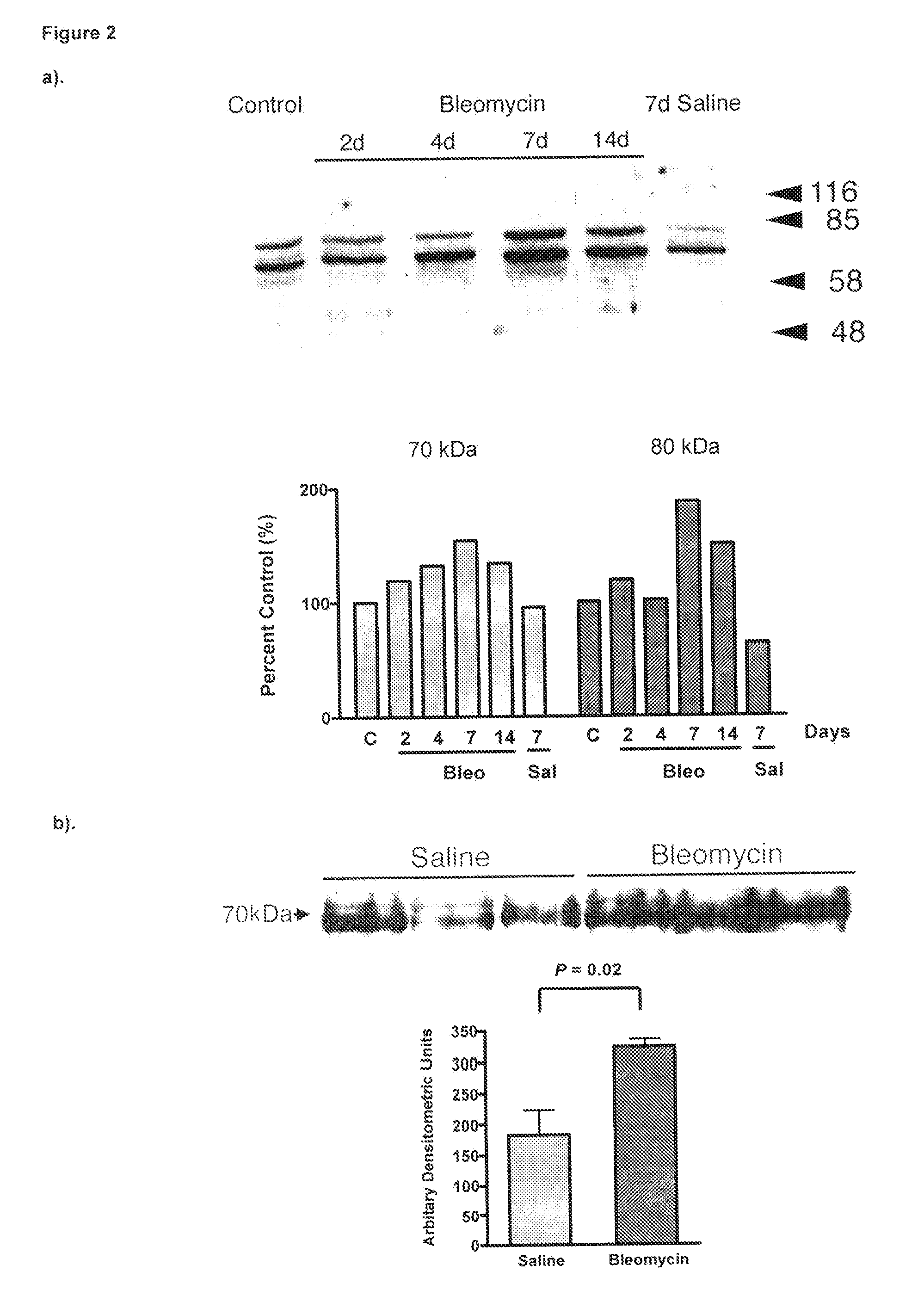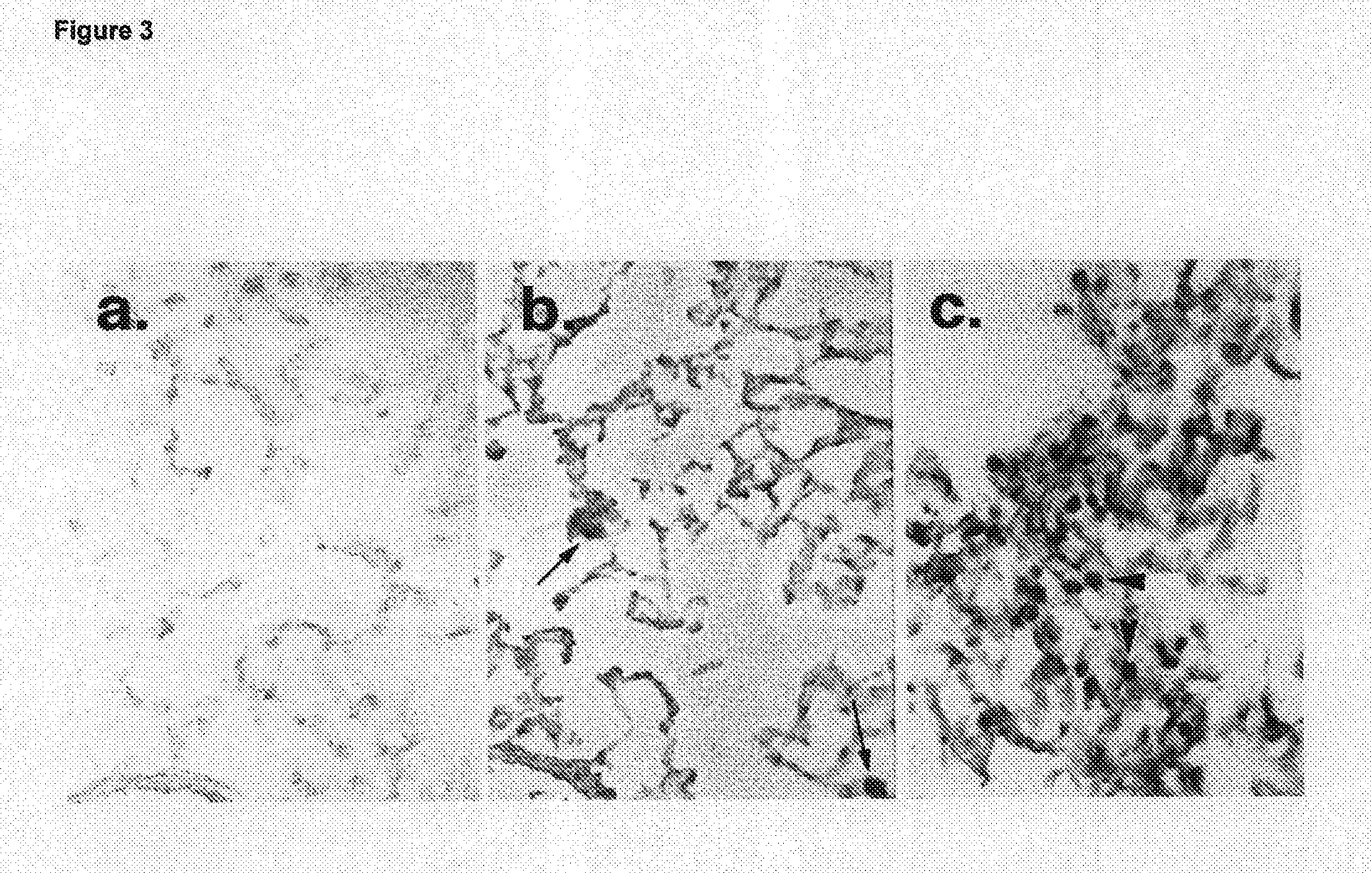Modulation of rhamm-caveolin/lipid raft interactions to affect development, responses to tissue injury, angiogenesis, tumorigenesis, metastasis and growth factor/cytokine responses
a technology of caveolin and lipid raft, applied in the field of lipid metabolism, can solve the problems of limiting the value of this therapy, affecting multiple processes, and using extracellular acting peptides, so as to block abnormal wound healing, improve response, and stimulate cell signaling
- Summary
- Abstract
- Description
- Claims
- Application Information
AI Technical Summary
Benefits of technology
Problems solved by technology
Method used
Image
Examples
example i
REFERENCES FOR EXAMPLE I
[0062] 1. Selman, M., T. E. King Jr, and A. Pardo, 2001. Idiopathic Pulmonary Fibrosis: prevailing and evolving hypotheses about its pathogenesis and implications for therapy. Ann. Internal Med 134:136-151. [0063] 2. Downey, G. P., Q. Dong, J. Kruger, S. Dedhar, and V. Cherapanov. 1999. Regulation of neutrophil activation in acute lung injury. Chest 116(l):46S-54S. [0064] 3. Hasleton, P. S., and T. E. Roberts. 1999. Adult Respiratory Distress Syndrome: an update. Histopathology 34:285-294. [0065] 4. Ware, L. B., and M. A. Matthay. 2000. The acute respiratory distress syndrome. New Engl. J. Med 342(18):1334-1349. [0066] 5. Groneck, P., and C. P. Speer. 1997. Pulmonary inflammation in the pathogenesis of bronchopulmonary dysplasia. Pediatr. Pulmonol. 16((Suppl.)):29-30. [0067] 6. Raghow, R., S. Lurie, J. M. Seyer, and A. H. Kang. 1985. Profiles of steady state levels of messenger RNAs coding for Type I Procollagen, Elastin and Fibronectin in hamster lungs under...
example ii
Stimulation of SMC Migration by HA and PDGF-BB Requires RHAMM
[0123] The biologic responses to HA appear to be mediated by specific cell-associated receptors, of which two have thus far been characterized well, namely CD44 and Receptor for HA-Mediated Motility (RHAMM, CD168). The expression and role of HA and these receptors in vascular injury responses has recently been reviewed. The expression of CD44 is increased in SMC after vascular injury in the rat, and anti-CD44 antibody partially blocks SMC proliferation in vitro. CD44 plays a critical role in athersclerosis since it promotes macrophage recruitment to atherosclerotic lesions and is required for dedifferentiation of SMC to the synthetic state characteristic of neointimal formation. In CD44 / Apo E double knockout mice, lesions were reduced by 50-70%. RHAMM, an N-glycosylated protein expressed both at the cell surface and intracellularly, mediates SMC migration in response to single scratch wounding of monolayers in vitro. Howe...
PUM
| Property | Measurement | Unit |
|---|---|---|
| Biological properties | aaaaa | aaaaa |
| Interaction | aaaaa | aaaaa |
Abstract
Description
Claims
Application Information
 Login to View More
Login to View More - R&D
- Intellectual Property
- Life Sciences
- Materials
- Tech Scout
- Unparalleled Data Quality
- Higher Quality Content
- 60% Fewer Hallucinations
Browse by: Latest US Patents, China's latest patents, Technical Efficacy Thesaurus, Application Domain, Technology Topic, Popular Technical Reports.
© 2025 PatSnap. All rights reserved.Legal|Privacy policy|Modern Slavery Act Transparency Statement|Sitemap|About US| Contact US: help@patsnap.com



